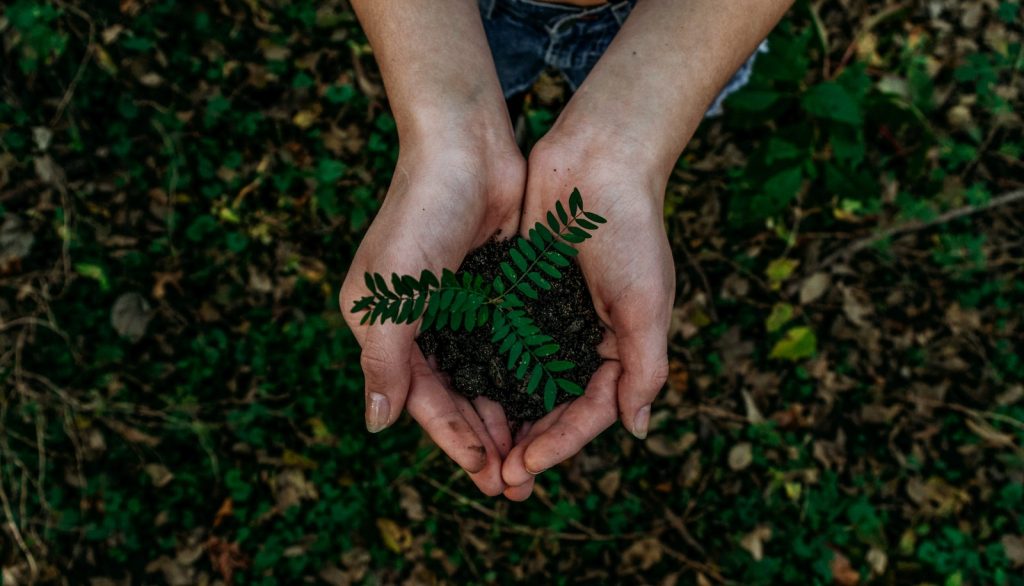It’s more important than ever to take a stance and be conscious of our environmental impact. Even the smallest changes can make a big difference when it comes to preserving our planet. Here are 14 easy and practical ways to be more eco-friendly in your everyday life.
1) Go paperless
In today’s age, there’s no need to print anything when you can simply view documents online. Going digital can save energy, water, trees and money.
2) Take shorter showers
It may not seem like much, but cutting down your shower time can make a big difference in your water consumption. Try setting a timer for 5 minutes to stay accountable.
3) Use natural cleaning products
You can easily replicate the same cleaning effects from chemical products by using natural ingredients such as baking soda, vinegar and lemon juice.
4) Reuse and repurpose
Instead of throwing something away, see if it’s possible to give it a new life. Reusing materials such as glass jars and plastic containers can reduce energy and resources used in production.
5) Walk or bike instead of drive
Not only will you help to reduce your carbon footprint, but you’ll also get some physical activity in the process.
6) Bring your own reusable bags
Say goodbye to plastic and invest in reusable bags when you’re doing your grocery shopping. It’s a practical way to reduce our plastic consumption.
7) Buy local produce
Buying from local farmers not only benefits the environment, but you’ll also be supporting your local economy.
8) Compost
Composting your food and garden waste can help reduce carbon emissions and create nutrient-rich soil for your garden.
9) Switch to LED lightbulbs
LED lights consume less energy and last up to 25 times longer than traditional incandescent bulbs.
10) Make your own snacks
It’s amazing how simple ingredients like nuts and fruits can be combined to create nutritious snacks. Avoid wasteful packaging by making your own food.
11) Refill containers
Many bulk items can be found in food co-ops and farmer’s markets. Refilling your containers can help to reduce the number of containers thrown away or recycled.
12) Use your air conditioner responsibly
Air conditioners can be energy guzzlers. Use them strategically, such as during the hottest times of the day.
13) Unplug appliances
Leaving your electronics plugged in will consume unnecessary energy, so unplugging them when you’re not using them can help to reduce energy waste.
14) Plant a garden
Adding greenery to your outdoor space can help to promote sustainability. Gardening can also be a great activity for the whole family to enjoy.
Final Thoughts
We all have opportunities to be more conscious of our environmental impact. From walking instead of driving to refilling containers, being eco-friendly doesn’t have to be difficult or time-consuming. With a few easy changes, everyone can do their part to reduce their carbon footprint.
Frequently Asked Questions (FAQs)
Q1. What are some simple ways to be eco-friendly?
A1. Some easy ways to be more eco-friendly include going paperless, taking shorter showers, using natural cleaning products, reusing and repurposing, walking or biking instead of driving and bringing your own reusable bags.
Q2. How can I reduce my water consumption?
A2. You can reduce your water consumption by taking shorter showers and properly maintaining your plumbing fixtures. Installing a low-flow showerhead and low-flow toilets can also help.
Q3. What should I do with food scraps instead of throwing them away?
A3. There are many ways to reuse or repurpose food scraps. You can compost them to create nutrient-rich soil for your garden, add them to smoothies or make soup stock.
Q4. How can I reduce energy waste at home?
A4. Installing LED lightbulbs that consume less energy than traditional incandescent bulbs and unplugging appliances when not in use are both effective ways to reduce energy waste at home.
Q5. Are there any eco-friendly snacks I can make?
A5. With a few simple ingredients, you can easily make snacks such as trail mixes, banana bites and energy bars. This is a great way to avoid wasteful packaging.
Q6. What are the benefits of buying local produce?
A6. Buying local produce can be beneficial in many ways. It can help to reduce your carbon footprint, plus you’ll also be supporting your local economy.
Q7. How can I use my air conditioner responsibly?
A7. You can set the thermostat higher when you’re not in the room and use a fan to help circulate the air. It’s also best to use the air conditioner during peak temperature hours.
Q8. What kind of materials can I reuse?
A8. Materials such as glass jars, plastic containers, paper and clothes can all be reused in some way. Just get creative and you’ll be surprised at how many different things you can repurpose.
Q9. Why is going paperless more eco-friendly?
A9. Going paperless can reduce your energy consumption, water consumption, tree consumption and save you money in the long run. In today’s world, there’s usually no need to print documents.
Q10. Are there any eco-friendly ways to get physical activity?
A10. Walking or biking instead of driving is a great way to get exercise while also reducing your carbon footprint. Plus, you’ll reap the added benefits of physical activity.




